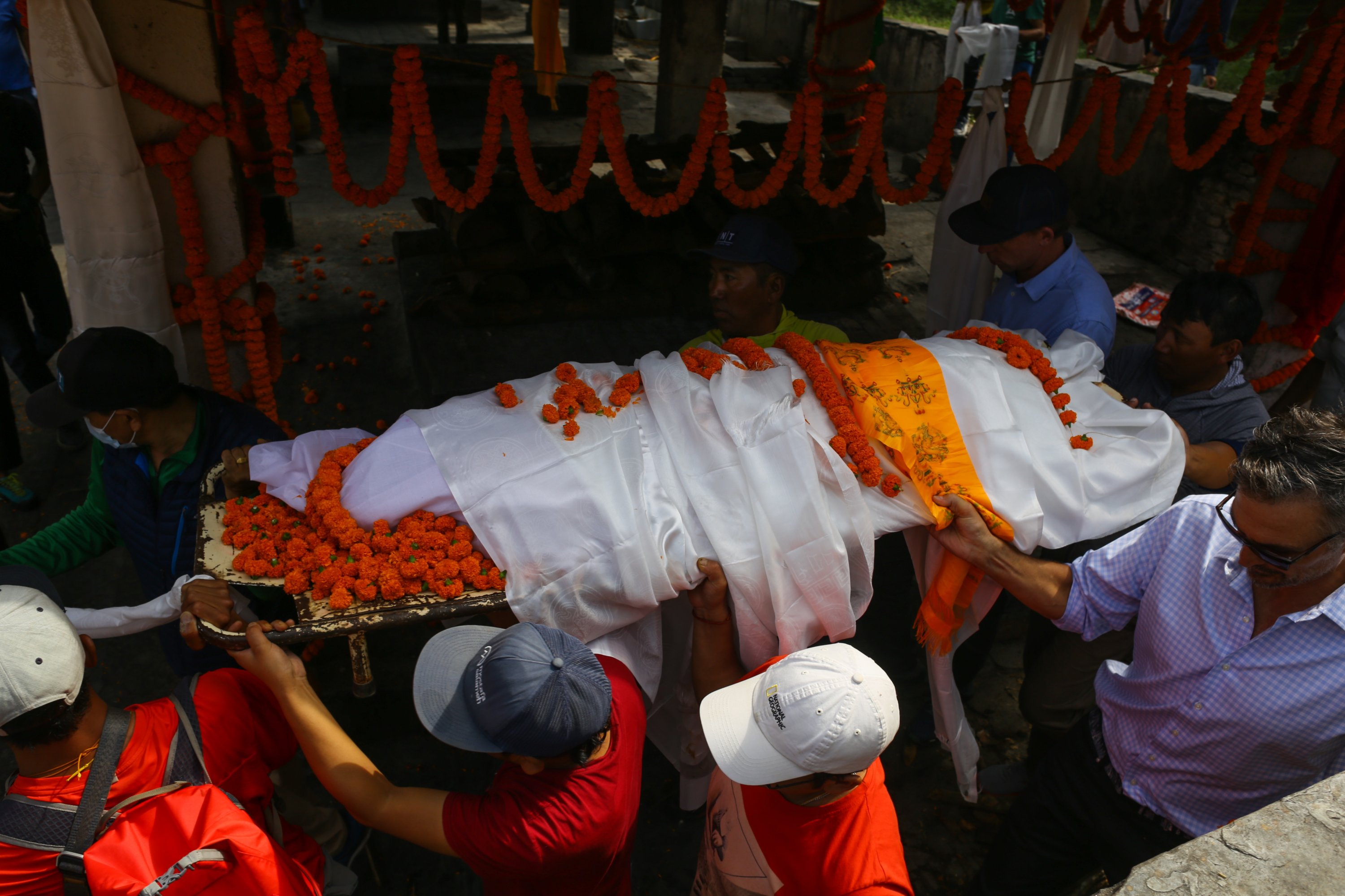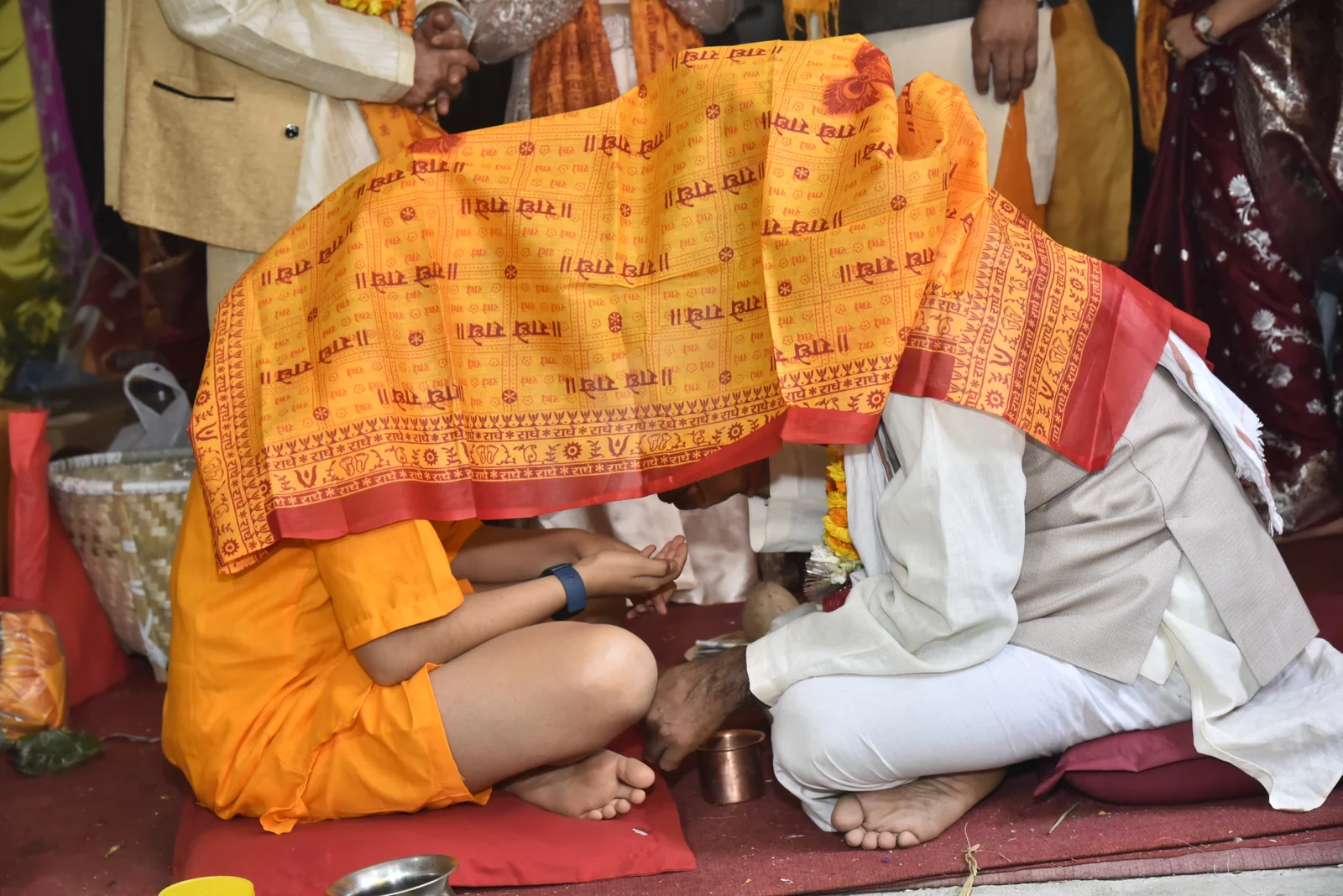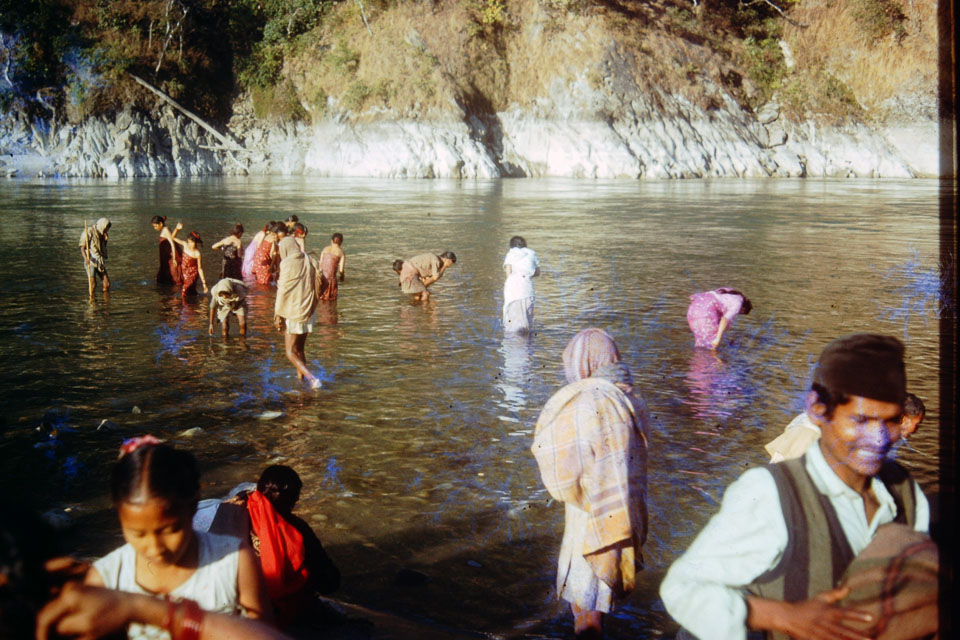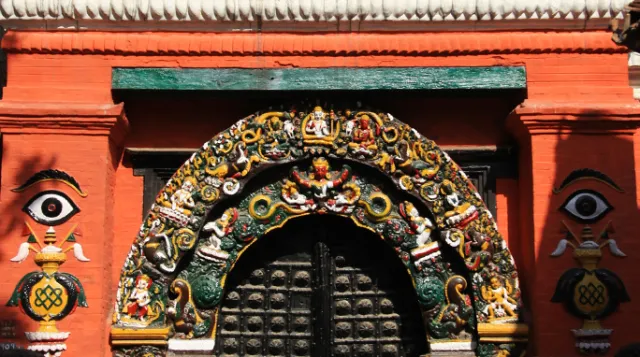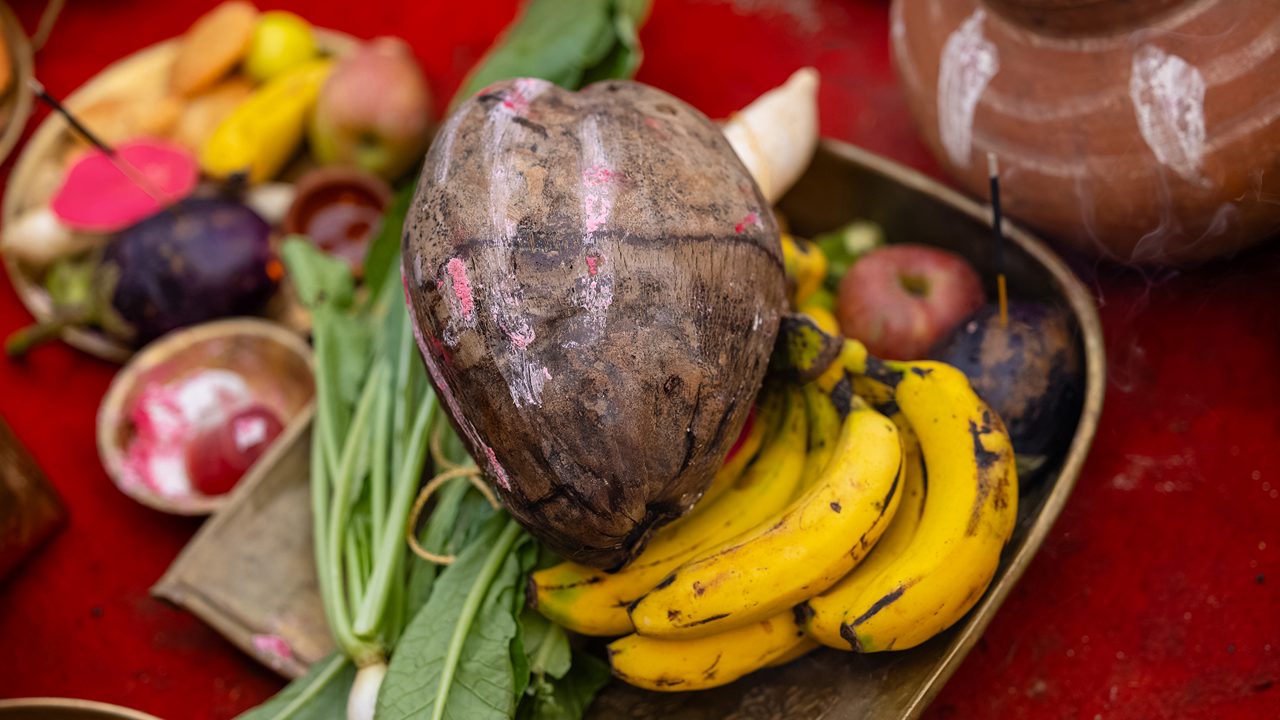Share this Article
Introduction
Dhaka fabric, one of Nepal’s most celebrated handwoven textiles, holds a unique place in the country’s cultural and artistic identity. Known for its vibrant geometric patterns and fine craftsmanship, Dhaka represents more than just clothing material—it symbolizes the heritage, pride, and creativity of Nepal’s eastern hills. The artistry of Dhaka weaving, particularly among the Limbu, Rai, and Magar communities, is deeply intertwined with local customs and traditions. While weaving itself has received much attention, the traditional dyeing techniques that give Dhaka its vivid hues are equally fascinating and essential to understanding its authenticity.
For centuries, artisans in regions such as Taplejung, Panchthar, and Ilam have employed natural dyes derived from plants, minerals, and other organic sources to color Dhaka yarns. These age-old techniques, perfected through generations, were not merely practical but also symbolic. Every shade carried cultural significance, spiritual undertones, and environmental consciousness. In modern times, synthetic dyes have largely replaced natural methods due to ease of use and cost efficiency, yet traditional dyeing remains a vital link to Nepal’s indigenous craftsmanship. Preserving these techniques is essential not just for cultural continuity but also for promoting sustainable and eco-friendly textile practices in an age dominated by industrial fashion.
Origins of Dhaka Fabric and Its Cultural Roots
The Dhaka fabric traces its roots to the Limbu community of eastern Nepal, particularly in the districts of Taplejung and Panchthar. Historically, Dhaka weaving was a household skill, passed down from mothers to daughters as part of domestic artistry. The term “Dhaka” itself is believed to have originated from the Bengali word “Dhaka,” referring to the capital of present-day Bangladesh, once famous for fine muslin fabrics. However, Nepal’s Dhaka evolved independently with its own patterns, materials, and dyeing traditions.
In the Limbu culture, Dhaka is not just an adornment but a marker of social status, identity, and pride. Traditional Dhaka topis (caps), shawls, and patukas (waistbands) are essential components of formal wear during ceremonies and festivals. Each piece tells a story through its color, motifs, and the manner in which it is woven. The dyes used in older Dhaka fabrics were exclusively derived from natural elements—barks, leaves, roots, fruits, and minerals available in the surrounding hills. The natural colors gave the fabric not only aesthetic richness but also a connection to the local environment and cosmology.
Materials Traditionally Used for Natural Dyeing
The richness of Dhaka’s colors comes from an intimate knowledge of local flora and their properties. The traditional dyers of eastern Nepal relied on a wide variety of plants, many of which grow abundantly in the forests and fields of Ilam, Panchthar, and Taplejung. Some of the most common sources of natural dyes included turmeric (Curcuma longa) for yellow, indigo (Indigofera tinctoria) for blue, walnut husk (Juglans regia) for brown and black, and madder root (Rubia manjith) for red.
Other plants such as Artocarpus lakoocha (badahar bark), Terminalia chebula (harro), and Acacia catechu (khayer) were also used to produce shades ranging from beige to deep brown. Flowers of Rhododendron arboreum could yield light pinks and reds, while onion skins produced warm amber tones. For fixing the colors, dyers used natural mordants like alum, iron rust, or lime, depending on the shade and desired finish.
The beauty of these dyes lies in their earthy tones and soft gradients, which reflect the natural environment. The process was entirely organic, requiring no synthetic chemicals, and thus produced fabrics that were biodegradable and skin-friendly. The slow, deliberate nature of this dyeing process also encouraged mindfulness and respect for the materials—qualities that modern mass production often overlooks.
The Process of Preparing the Yarn for Dyeing
Before the dyeing process begins, artisans carefully prepare the yarn. Traditionally, Dhaka was woven with handspun cotton or silk threads, which required proper washing and treatment to absorb colors effectively. The raw yarn was first cleaned using a mixture of ash and water to remove impurities like oil, dust, or plant residue. It was then rinsed thoroughly in cold water and sun-dried.
Once cleaned, the yarn underwent a process called “mordanting,” which helped the natural dye adhere to the fiber. Mordanting agents were derived from natural materials such as alum, tannin-rich bark, or iron. The yarn was soaked in a mordant solution and left to rest for several hours. Depending on the desired hue, dyers varied the ratio of mordant to water. For instance, alum would brighten colors, while iron would darken them.
In many villages, the mordanting process was performed alongside prayers or chants, invoking blessings for the success of the color and the weaver’s prosperity. The involvement of spirituality and patience was central to the dyeing craft, making it both a technical and meditative practice.
Traditional Dyeing Techniques
Boiling Method
One of the most common traditional methods for dyeing Dhaka yarns was the boiling technique. Dyers filled a large brass or copper pot with water and brought it to a boil over a wood fire. The chosen dye material—such as crushed roots, bark, or leaves—was added and simmered for several hours until the water took on a deep color. The prepared yarn was then immersed in this dye bath and left to soak, sometimes overnight, depending on the desired intensity. The yarn was stirred occasionally using wooden sticks to ensure even coloring.
After sufficient soaking, the yarn was removed and rinsed in running water to remove excess dye. Finally, it was dried in the shade to prevent the colors from fading under direct sunlight. The entire process could take several days, requiring patience and careful observation. This slow crafting process gave Dhaka its distinct depth and natural warmth that synthetic dyes could never replicate.
Cold Dyeing and Fermentation
Another method used in certain communities involved cold dyeing and fermentation. In this process, dye plants were soaked in water for several days, allowing natural fermentation to release pigments. The yarn was then immersed in this cold mixture, turning gradually from pale to deep hues. Indigo dyeing, in particular, required this fermentation process. Artisans kept the indigo vat alive for weeks, feeding it with organic materials like jaggery and lime to maintain its chemical balance.
When the yarn was lifted from the vat, it appeared greenish but turned blue upon exposure to air—a magical transformation that fascinated many weavers. This process required skill and intuition, as the right balance of ingredients and temperature determined the final shade. Indigo dyeing was often accompanied by stories and rituals, as the blue color symbolized depth, tranquility, and divine protection in local beliefs.
Symbolism of Colors in Dhaka Dyeing
In traditional Limbu and Rai culture, colors were not merely aesthetic choices but carried symbolic meaning. Red represented energy, vitality, and prosperity; it was often used in fabrics worn during weddings and major festivals. Yellow symbolized fertility and light, often associated with spirituality and rituals of renewal. Blue represented the sky and protection, while black symbolized the strength and resilience of the community.
Women weavers in Ilam and Panchthar often created patterns that reflected nature—the sun, rivers, and mountains—and used colors that corresponded to these elements. The red and white contrasts, now iconic in Dhaka topis and shawls, symbolized purity and courage. The process of dyeing was therefore not merely a craft but a language through which culture and identity were expressed. Every strand of dyed thread carried a story—a memory of the land and its people.
Tools and Equipment Used in Traditional Dyeing
The equipment used in traditional Dhaka dyeing was simple but crafted with care. The primary tools included brass or copper pots, wooden stirring sticks, handwoven baskets for draining, and stone grinding slabs for crushing the raw materials. Natural fibers were boiled over wood fires, and the color intensity was judged visually by the dyer’s experience.
In some areas, women used clay pots, which were believed to enhance the color quality and retain heat evenly. The simplicity of these tools reflected the self-sustaining nature of village life, where everything—from the yarn to the dye to the equipment—was sourced locally and used sustainably.
Transition from Natural to Synthetic Dyes
With modernization and the influence of urban markets, the introduction of synthetic dyes gradually changed the traditional Dhaka dyeing process. By the mid-20th century, chemical dyes such as aniline and azo compounds became widely available and offered brighter, more consistent colors. They required less time and labor, making them more practical for commercial production.
However, this shift also led to the loss of many traditional dyeing skills and a decline in the use of local plants. Synthetic dyes, though convenient, often lack the subtlety and soul of natural dyes. Moreover, they pose environmental risks due to chemical waste and water pollution. Many elder weavers lament that the essence of Dhaka—the slow, natural beauty of its colors—has faded in the pursuit of efficiency.
In recent years, however, there has been a growing movement to revive natural dyeing practices as part of sustainable fashion and cultural preservation initiatives in Nepal.
Revival and Preservation Efforts
Several organizations and cooperatives in eastern Nepal are now working to reintroduce traditional dyeing techniques. These initiatives focus on documenting old recipes, training younger artisans, and promoting eco-friendly dyeing as a means of economic empowerment. Workshops are being held in Ilam and Panchthar to teach how to prepare natural dyes and mordants, encouraging local communities to plant dye-yielding trees and shrubs.
Tourism has also played a positive role in this revival. Many visitors, particularly from Japan and Europe, show great interest in handwoven, naturally dyed textiles. Artisans are now showcasing their dyeing processes as part of cultural tours and heritage exhibitions. The Nepal government and NGOs have begun recognizing natural dyeing as an intangible cultural heritage worth protecting.
Dhaka fabrics dyed naturally are now being rebranded as “eco-Dhaka” or “heritage Dhaka,” appealing to environmentally conscious consumers while keeping ancestral techniques alive.
Environmental and Economic Implications
Traditional dyeing techniques, though labor-intensive, are far more sustainable than industrial dyeing. They use biodegradable materials, minimal energy, and produce no harmful effluents. In a world facing severe ecological crises from textile pollution, returning to natural dyes could be both an environmental and cultural solution.
Furthermore, reviving natural dyeing can create new livelihoods in rural areas. Cultivating dye plants and processing them locally can generate income for farmers, women’s cooperatives, and artisans. Dhaka’s story, therefore, extends beyond art—it becomes a model of sustainable development rooted in culture.
Cultural Continuity and Symbolic Legacy
Dhaka remains a powerful emblem of Nepali identity. Whether worn as a cap during national celebrations or woven into elegant shawls, its patterns and colors continue to symbolize pride, craftsmanship, and belonging. The revival of traditional dyeing brings back not only old colors but also old meanings—those of patience, harmony with nature, and community craftsmanship.
In Panchthar and Ilam, older women still recall how they learned to boil turmeric roots or crush walnut husks as children, helping their mothers prepare dyes for weaving. Those memories connect generations through shared artistry. To preserve these techniques is to preserve the rhythm of rural life itself—a life in tune with seasons, forests, and the gentle hues of the hills.
Conclusion
The traditional dyeing techniques used in Dhaka fabric production are more than just a means of adding color—they are a reflection of Nepal’s ecological wisdom, cultural identity, and artistic soul. These ancient methods represent a sustainable balance between humans and nature, where every pigment tells a story and every thread holds history.
As the world moves toward greener practices and cultural revival, there is renewed hope that Dhaka’s natural dyes will regain their rightful place. The combination of traditional knowledge and modern innovation can ensure that this ancient art continues to flourish. By honoring the old dyeing practices of Dhaka, Nepal not only preserves its cultural roots but also offers a path toward ethical and sustainable fashion for future generations.
Categories:
Culture & Traditions
Tags:
DhakaFabric
,
HandwovenDhaka


